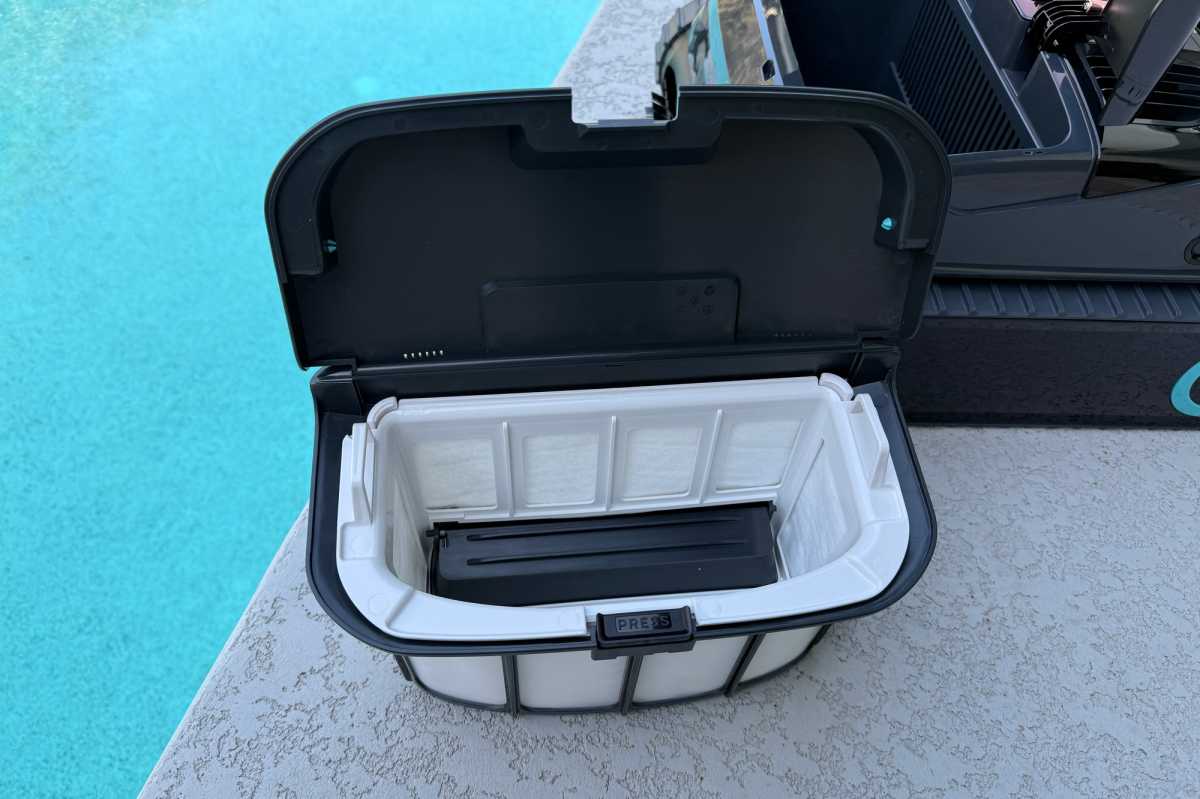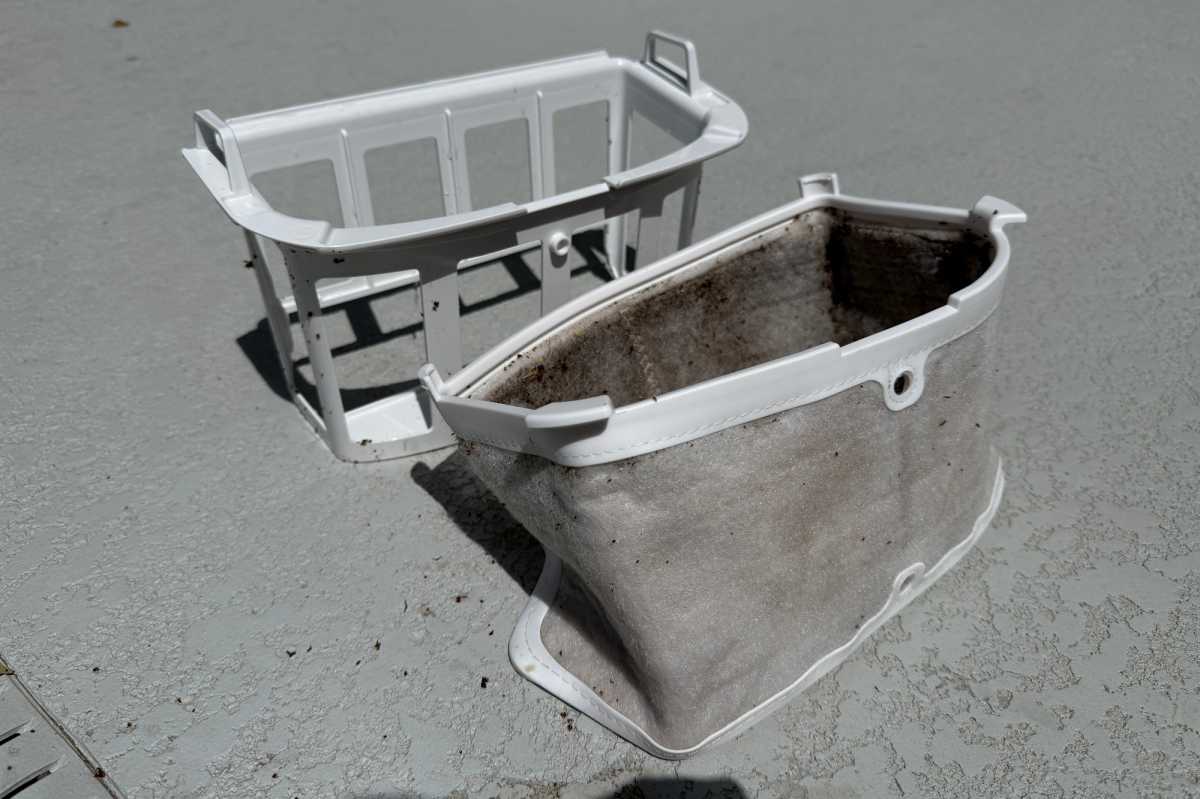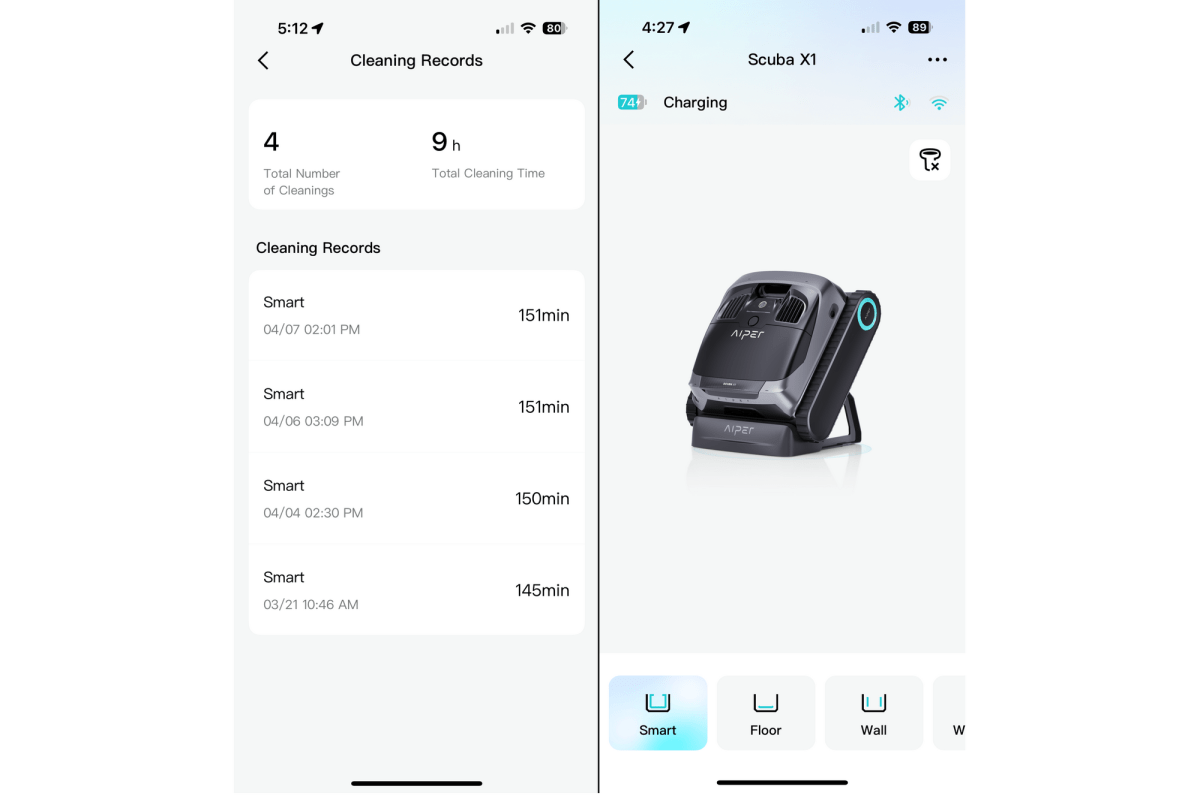This pricey robotic pool cleaner looks impressive, but its cleaning performance leaves much to be desired.
Aiper makes some excellent robotic pool cleanrs—such as its stellar workhorse, the Seagull Pro—but it also has a few duds in its arsenal, including the Seagull Plus and the Scuba S1. With its latest robot, the Scuba X1, Aiper looks to bring some higher-end features (including smart connectivity) to the lineup. With a street price of $1,200, it’s one of Aiper’s most expensive models–and it’s got the gold trim to prove it.
Specifications
The Aiper Scuba X1 doesn’t change the basic design that most of Aiper’s full-size robots have followed for years: Compare its design to the aforementioned Seagull Pro, Seagull Plus, and Scuba S1. The 24-pound Scuba X1 runs on two treads that sandwich two front-mounted cylindrical brushes that do the heavy lifting; rather, the heavy scrubbing. All black with the aforementioned gold accents, the design is sleek and orca-like. If nothing else it certainly looks the part of a $1,000-plus pool robot.
The MicroMesh system in the Aiper Scuba X1’s debris basket is effective at capturing fine-grained grime.
The unit includes a 7800mAh battery that Aiper says should provide a running time of three hours and supports a maximum pool size of 2,150 square feet. A single onboard button lets you power up the robot and choose an operating mode: “smart mode” (floors and walls), floor only, walls only, or waterline only (where the robot moves vertically along the pool wall to scrub the tile).

Christopher Null/Foundry
An additional mode, “scheduled,” is only available in the Aiper app and commands the robot to run for 50 minutes, cleaning the floor only, once every 48 hours, until its battery dies. A large LED bar on the top of the robot indicates when it is charging (pulsing red, blue, or green, depending on charge level), ready to run (solid green), or finished operating (solid red), along with usage for various error modes.
The unit is charged via a convenient docking station that connects to wall power and eliminates the need to manually plug the robot in after each run. The dock is simple to snap together out of the box, without any tools required.
The filter basket requires special attention because of its three-piece design. A traditional outer basket collects larger debris, while a “MicroMesh ultra-fine filter” picks up smaller morsels of dirt and sand. The MicroMesh filter is a piece of fabric that wraps around an interior filter box, which doesn’t do anything except hold the MicroMesh in place. All three pieces are sandwiched together when installed; I’ll talk about the effectiveness of this setup in a bit.
Performance

Christopher Null/Foundry
As with nearly all robotic pool cleaners, the Scuba X1 is activated by placing it on flat ground, powering it up, selecting an operating mode, and dropping it into the pool. In the standard smart mode, it first cleans the walls, then moves to the floor, moving relatively methodically and slowly as it sweeps back and forth. The unit does spend a long while idling on the pool floor whenever it needs to make a turn, apparently trying to figure out its next move, before it gets going again.
In my pool, I never got more than 2.5 hours of running time out of the robot, compared to the 3 hours Aiper specifies. The bigger issue, however, is that the robot missed quite a bit of material during its runs in my pool. On average, it collected only about 90 percent of test debris, whether organic or synthetic, leaving behind leaves on the bottom of the pool. That’s quite a poor showing for a robot in this price range, and arguably the unit’s biggest shortcoming.

Christopher Null/Foundry
A close second, however, is cleanup. While the MicroMesh system is effective at capturing fine-grained grime, it is a massive pain to clean. First, the mesh filter must be detached from the interior filter box, which is a challenge when it’s dry and a huge hassle when it’s wet and dirty.
Disconnecting the various clips and tabs that hold the filter in place is a chore even before you set about cleaning it. A hose doesn’t do the trick; I regularly needed to use a scrub brush to get the filter mostly free from debris, all of which meant a considerable amount of effort and making quite a mess to boot. I’ve never spent so much time emptying a filter basket, which is not what I expect from device in this price range.
Retrieving the bot after its cleaning mission is also a chore: While the robot can climb walls, it can’t pull itself out of the pool when quitting time comes, unlike some competitors at this price level. The Scuba X1 was at least successful at docking itself near the wall when complete, but you’ll need to use the included hook and a pole to lift it from the water.

Christopher Null/Foundry
Aiper’s app is for the most part superfluous. After a quick and easy Bluetooth-based setup, you’ll find that the app can’t really do anything except choose the operating mode, which (except for the scheduled mode) you can do via the single button on the unit. The sole additional feature is a basic log of operational activity and running time, which is only of minimal use. As with most robots, the app won’t connect to the device while the unit is in the water due to interference issues.
Should you buy an Aiper Scuba X1?
If it had a price of $500, the Aiper Scuba X1 might be an acceptable lower-cost pool robot solution, but it just doesn’t do a good enough job cleaning to merit buying it at its full price of $1,200.
The hassle involved with cleaning the filter basket only makes things more frustrating, and the value proposition even less compelling.




